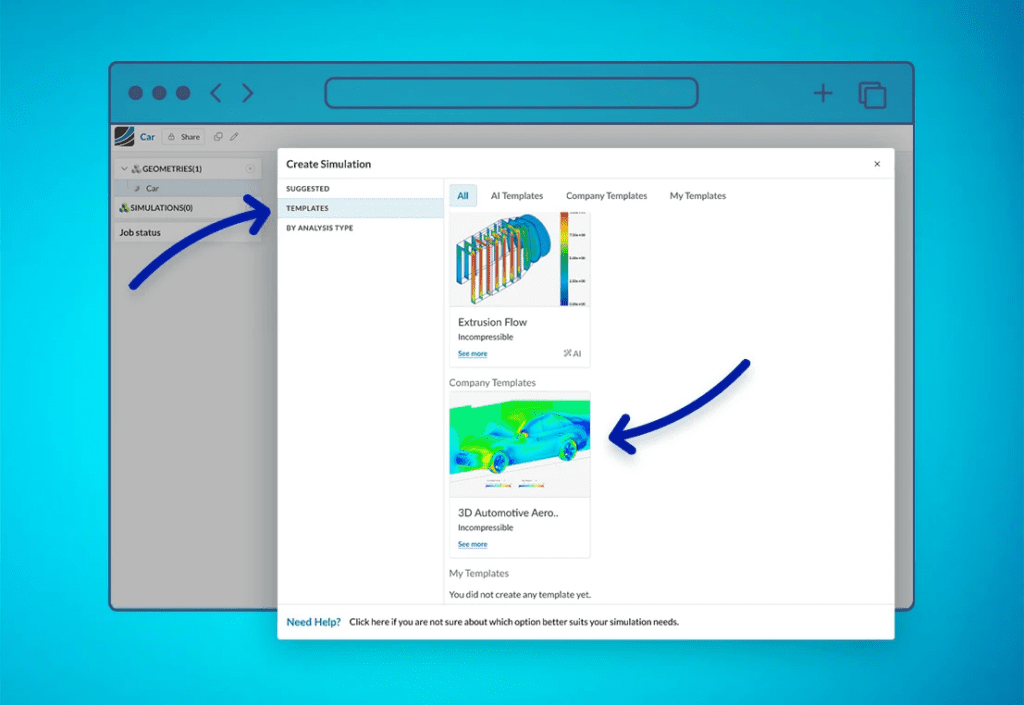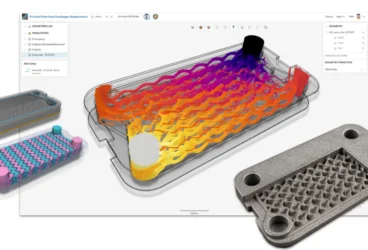Engineering teams are constantly seeking ways to improve efficiency in simulation workflows. In our latest webinar, Automating Simulation Workflows: Templates and Admin Features in SimScale, we explored how engineers can leverage automation, templates, and admin controls to streamline their simulation processes.
Led by Kanchan Garg, SimScale’s product lead for rotating machinery and flow control, the session provided an in-depth look at SimScale’s latest advancements in simulation process and data management (SPDM). Here are the top five takeaways from the discussion.
On-Demand Webinar
If these highlights caught your interest, there are many more to see. Watch the on-demand Simulation Experts Series webinar from SimScale on Automating Simulation Workflows by clicking the link below.
1. The Need for Automated Simulation Workflows
One of the biggest challenges in simulation is the repetitive nature of setting up similar simulations across projects. Engineers often find themselves manually defining boundary conditions, adjusting CAD models, and reconfiguring post-processing settings.
SimScale addresses this by enabling:
- Repeatability: Automating the setup process to minimize human error.
- Traceability: Ensuring simulation data is always accessible and AI-ready.
- Seamless Integration: Plugging simulation workflows into broader PLM environments.
By automating these processes, teams can focus on innovation rather than setup.
2. Templated Workflows: Reuse and Scale Simulations with Ease
One of the standout features covered in the webinar was SimScale’s templated workflows. Instead of configuring each simulation from scratch, users can:
- Save simulation setups as templates
- Apply these templates to new projects instantly
- Maintain consistency and quality control across teams
For example, an organization can create a standard CFD simulation template for valve design. Engineers can then reuse it across multiple projects, drastically reducing setup time.
3. Automating Post-Processing: Save and Reuse Visualization States
Post-processing is often one of the most time-consuming aspects of simulation. Engineers need to ensure results are presented consistently, especially when comparing multiple designs.
SimScale now allows users to:
- Save post-processing states (camera angles, contour views, and filters)
- Apply these states to new simulations instantly
- Ensure uniform visualization for clear design comparisons
This eliminates the need to manually adjust visualization settings every time a new result is generated.
4. AI-Powered Design Exploration: Rapidly Evaluate Multiple Scenarios
AI is revolutionizing simulation by enabling rapid design exploration. Instead of running full-fledged simulations for every design iteration, SimScale’s AI-powered prediction model allows users to:
- Train AI models on existing simulation data
- Generate near-instant predictions for new designs
- Filter out unviable designs before running full simulations
For example, in a valve design study, AI can predict flow behavior across different configurations without requiring new CFD simulations, significantly accelerating the design process.
5. Admin Controls: Manage Teams and Resources Efficiently
For organizations managing multiple engineers and projects, SimScale’s admin features provide full visibility and control over simulation activities. Key functionalities include:
- User management: Assign roles and permissions for team members
- Resource allocation: Distribute CPU/GPU budgets across users
- Project spaces: Create dedicated workspaces for different teams
Additionally, upcoming enhancements will include detailed analytics dashboards, allowing admins to track simulation usage, predict costs, and optimize resource allocation.

Looking Ahead: What’s Next?
The webinar concluded with a sneak peek at upcoming features, including:
- Full-fledged simulation templates with locked parameters
- Advanced monitoring and analytics for better resource planning
- Seamless integration with PLM systems for centralized data management
SimScale continues to push the boundaries of cloud-native simulation, making it easier for engineers to automate, manage, and scale their simulation workflows.
If you missed the live session, you can watch the full webinar on demand. For a hands-on demo of these features, feel free to request a demo below.


